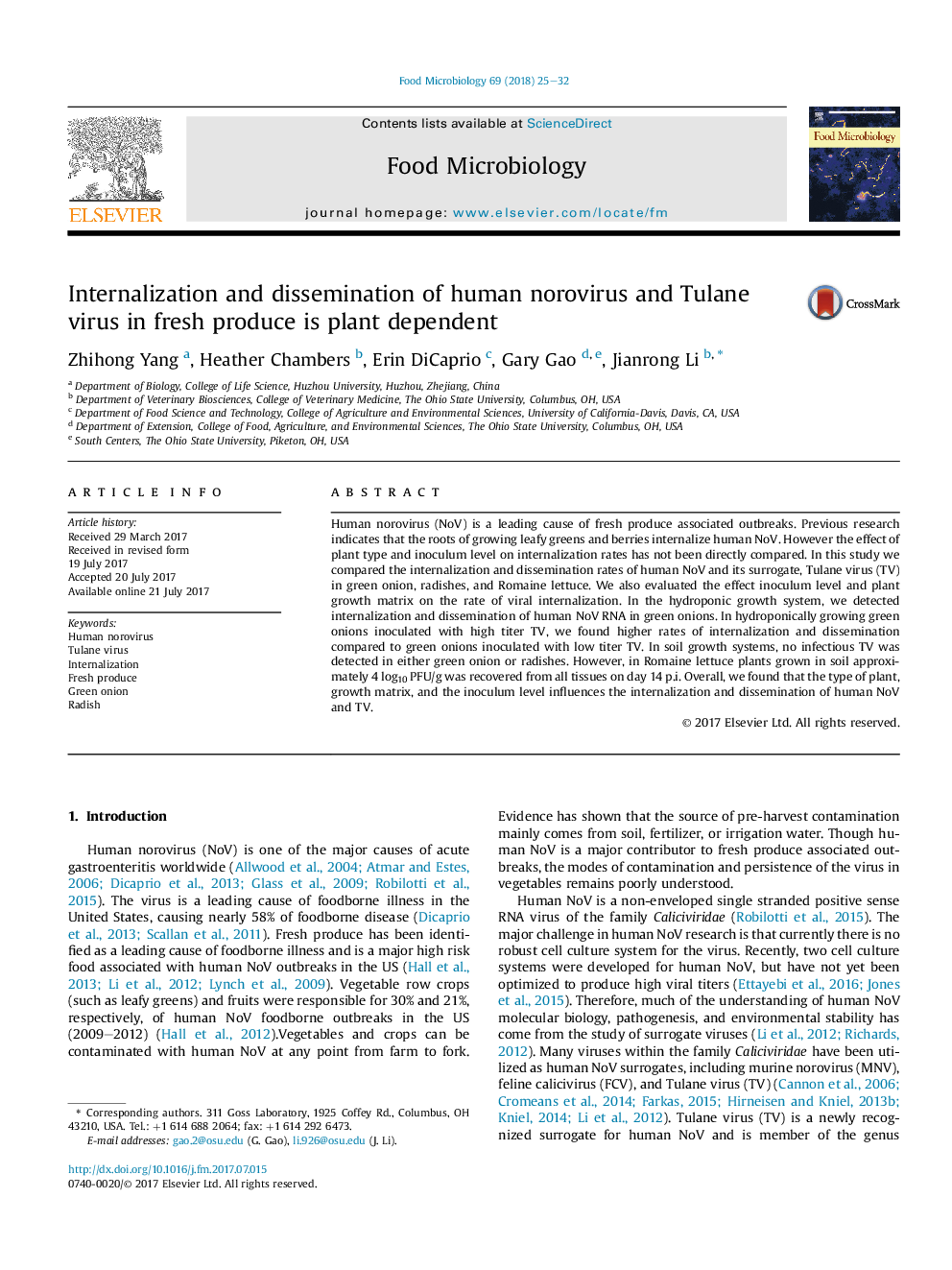| Article ID | Journal | Published Year | Pages | File Type |
|---|---|---|---|---|
| 5740072 | Food Microbiology | 2018 | 8 Pages |
â¢Human norovirus RNA internalized in green onions grown hydroponically.â¢Low levels of infectious Tulane virus internalized in green onion.â¢Tulane virus internalized in Romaine lettuce grown in soil.â¢Tulane virus not internalized in green onions or radishes grown in soil.â¢Viral internalization dependent on plant type, inoculum level, and growth matrix.
Human norovirus (NoV) is a leading cause of fresh produce associated outbreaks. Previous research indicates that the roots of growing leafy greens and berries internalize human NoV. However the effect of plant type and inoculum level on internalization rates has not been directly compared. In this study we compared the internalization and dissemination rates of human NoV and its surrogate, Tulane virus (TV) in green onion, radishes, and Romaine lettuce. We also evaluated the effect inoculum level and plant growth matrix on the rate of viral internalization. In the hydroponic growth system, we detected internalization and dissemination of human NoV RNA in green onions. In hydroponically growing green onions inoculated with high titer TV, we found higher rates of internalization and dissemination compared to green onions inoculated with low titer TV. In soil growth systems, no infectious TV was detected in either green onion or radishes. However, in Romaine lettuce plants grown in soil approximately 4 log10Â PFU/g was recovered from all tissues on day 14 p.i. Overall, we found that the type of plant, growth matrix, and the inoculum level influences the internalization and dissemination of human NoV and TV.
